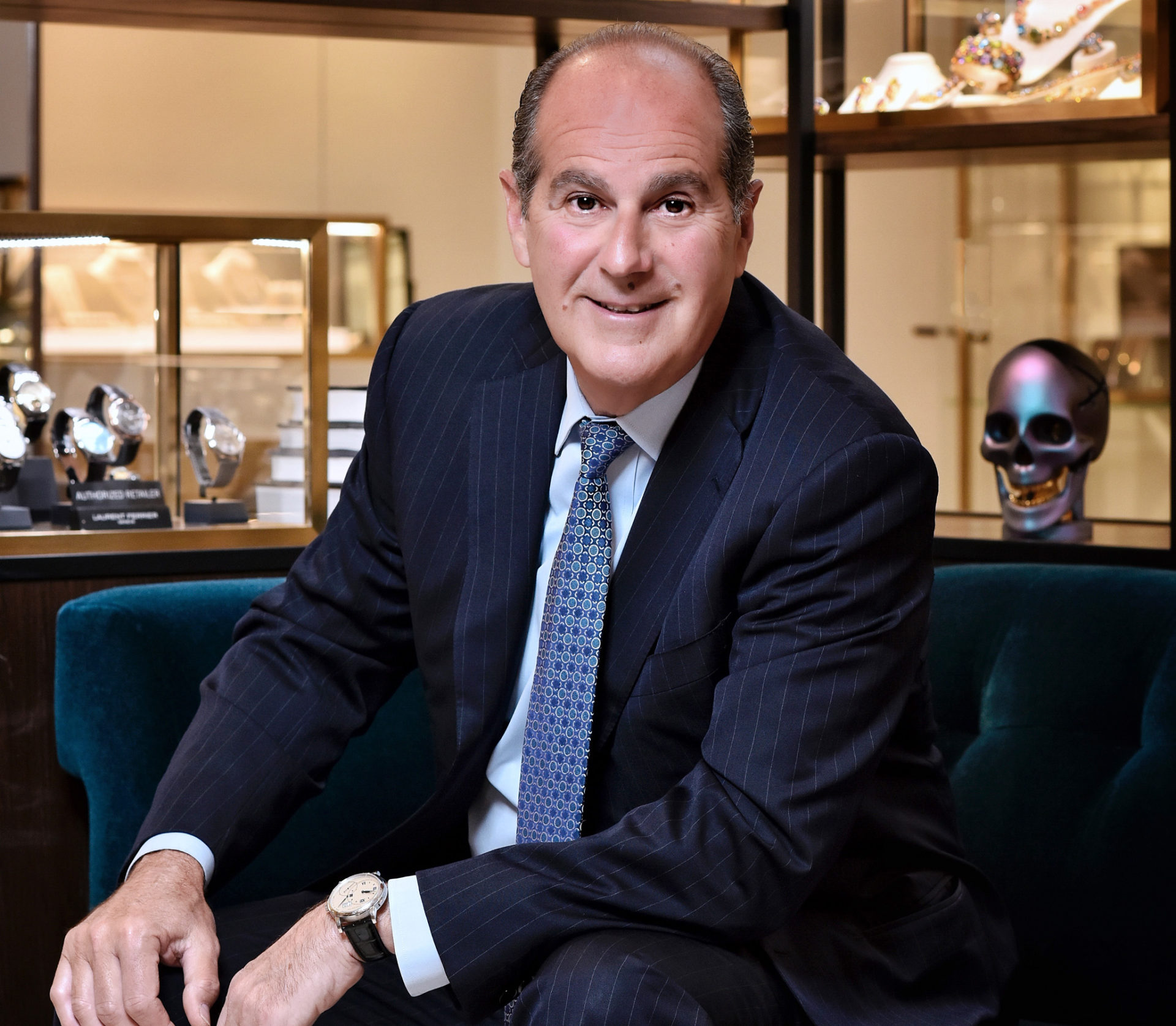There has been a feeling in the air that independent watchmakers are enjoying a purple patch.
After decades struggling to be noticed, suddenly demand for their watches is soaring and that is pushing prices to never-before-seen levels.
One retailer that has stuck with independents through the lean times, and is now reaping the rewards of its loyalty, is Cellini in midtown Manhattan, which recently moved its showroom out of the lobby of the Walforf Astoria to a street front location just up Park Avenue from the famous hotel.
WatchPro’s Rob Corder spoke to Cellini’s owner Leon Adams to see what the wider watch industry can learn from the rise of independents.
WatchPro: How is business right now? Are things getting back to normal?
Leon Adams: I don’t know why it has been so busy here in the past two weeks, it has been crazy. We have had some snow storms here and people have been cooped up. We have been run ragged trying to get product to people. Business has been very strong.
WP: I have heard from a lot of retailers that the luxury end of the watch market has been surprisingly strong over the course of the pandemic.
Leon Adams: The watch business has been very strong. The jewelry business on the other hand has been a bit quiet. We are not getting the walk in traffic that we usually do. There is no tourism. New Yorkers for the most part have traveled to warmer climates. The jewelry, which is a little more personal and has to be tried on and looked at has seen sales on the decline. Branded product has done a lot better.
WP: You are now operating out of one store on Park Avenue in Manhattan, but tell me a little about your story to this point.
Leon Adams: We ran a boutique in the Waldorf Astoria hotel for 41 years and had a small satellite boutique on Madison Avenue. When the Waldorf closed because Chinese investors bought it and are renovating it we had to evacuate in February of 2017.
The Madison location, which was really just a satellite, was way too small to operate from so we built our much larger 3,000 square foot location on 56th and Park Avenue, which we officially opened in 2019. We can get all our brands under one roof and all our jewelry displayed. That is working out pretty well.
WP: Location-wise, you are a little away from the prime retail areas of 5th Avenue and Madison, so that must mean you have the pulling power so that customers are happy to make specific trips to see you.
Leon Adams: I would agree with that. We are not in a shopping area so it is more of a destination location, although we do a lot of business with New Yorkers. Our local clientele is our bread and butter, but we also get a lot of people that travel to New York City staying at midtown hotels like the Waldorf Four Seasons or Peninsula. That brings a fair amount of tourist business.
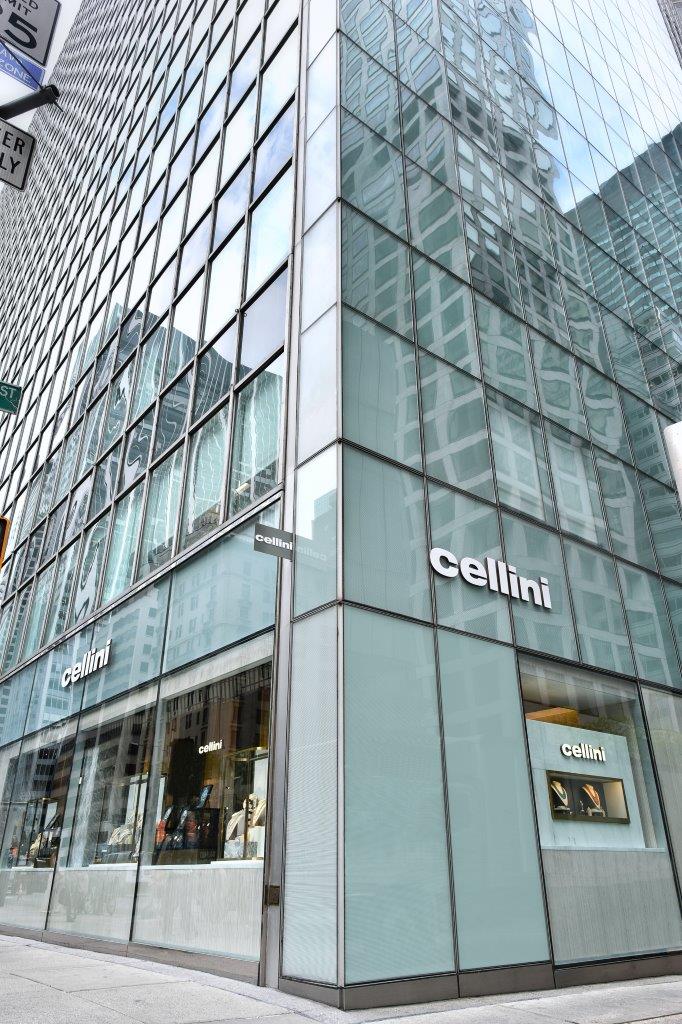
WP: Tell me about the last year. How did you react in the very early weeks, and how did you manager in the heart of a city that has been virtually a ghost town since last March?
Leon Adams: We closed down around March 15 and we were closed for three months. During that time we did get quite a lot of inquiries because of our website and social media from our clientele base. What we did was come into the store for a couple of hours one day every two weeks or so, just to get those shipments out and take care of those clients.
It was very difficult because there were things that we did not have in stock and we could not be on the premises to take deliveries. Everything was delayed and it was a bit of a trauma to say the least.
When we did open back up around June 15, we were able to catch up on a lot of the back-ordered product and get the shipments out.
I would say that business has been OK. It hasn’t been terrible. A lot of people have been cooped up. A lot of money has been made on the stock market. There is a lot of liquidity out there. And people are bored and shop online, do their research online, they are reading magazines and watching the social media blitz that the watch brands have generated. That has sparked interest and people have been purchasing.
A great number of customers did not spend [during the lock down] because they want to come in and try stuff on, and some of them are also resistant to coming into stores. Thankfully, that is getting better.
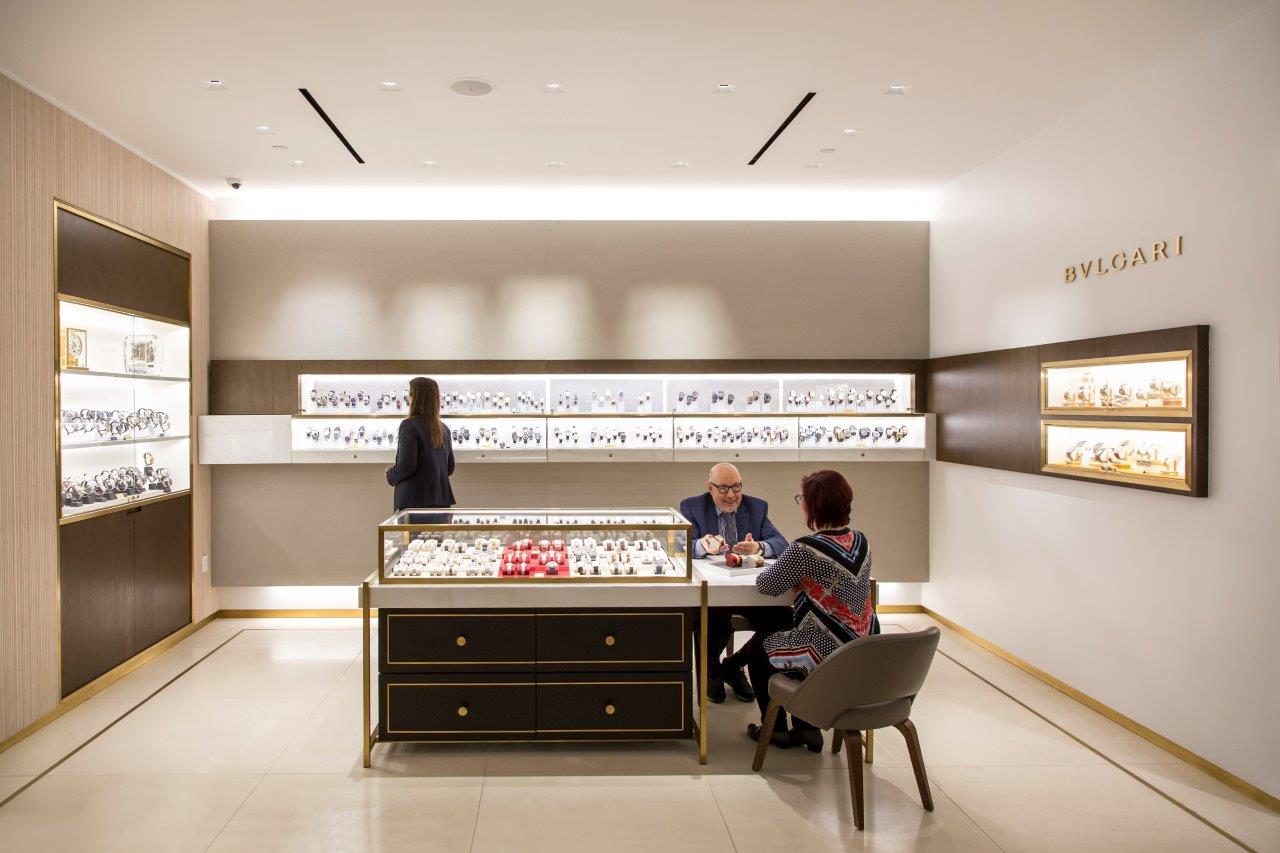
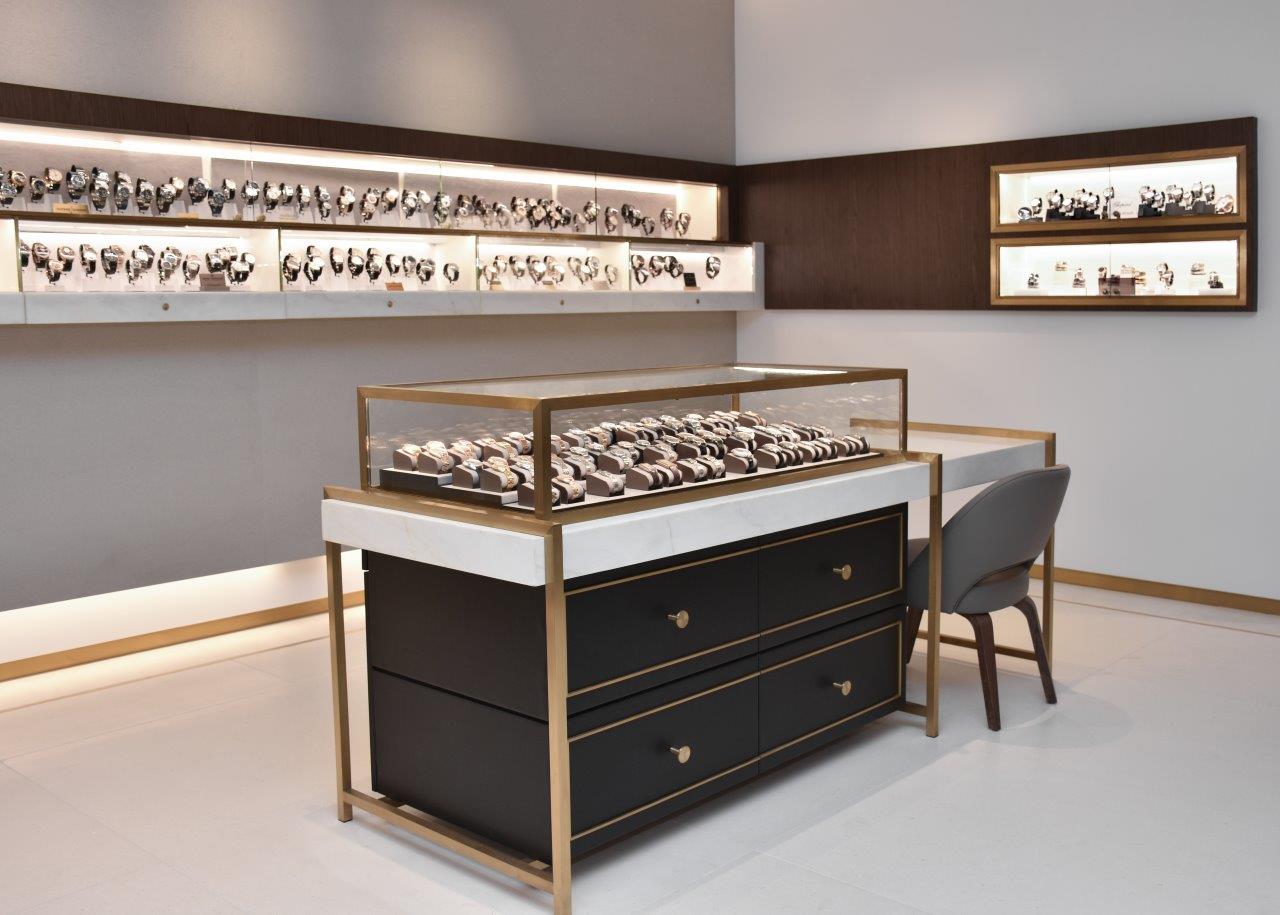
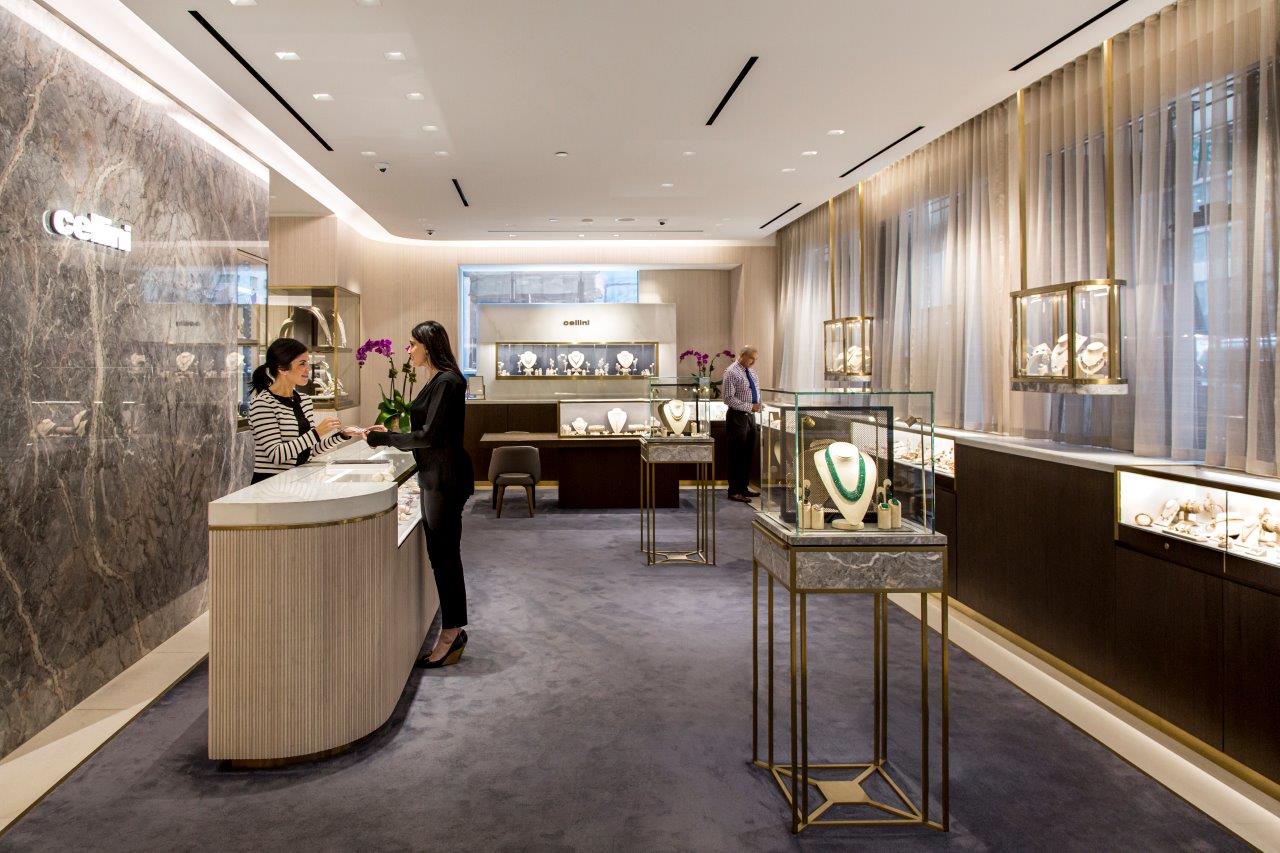
WP: Did you have supply problems as well, particularly from the independent watchmakers that do not make too many watches every year and had to shut down for two or three months in Switzerland?
Leon Adams: Yes, not only with independents but also with larger brands. It seemed like their output was probably down by at least 25%. They certainly lost 25% of their production time during the covid lock down [Switzerland shut down for around three months in Q2 of 2020], and their independent suppliers of parts faced the same problem, so the whole industry has seen a significant reduction in available product.
In a way that is not a bad thing. In general too much product has been produced by some of the mainstream brands over the years and I think that the lower production and limit on what product is available has actually increased demand so people are paying higher prices. On the whole, I think it has been good for the industry.
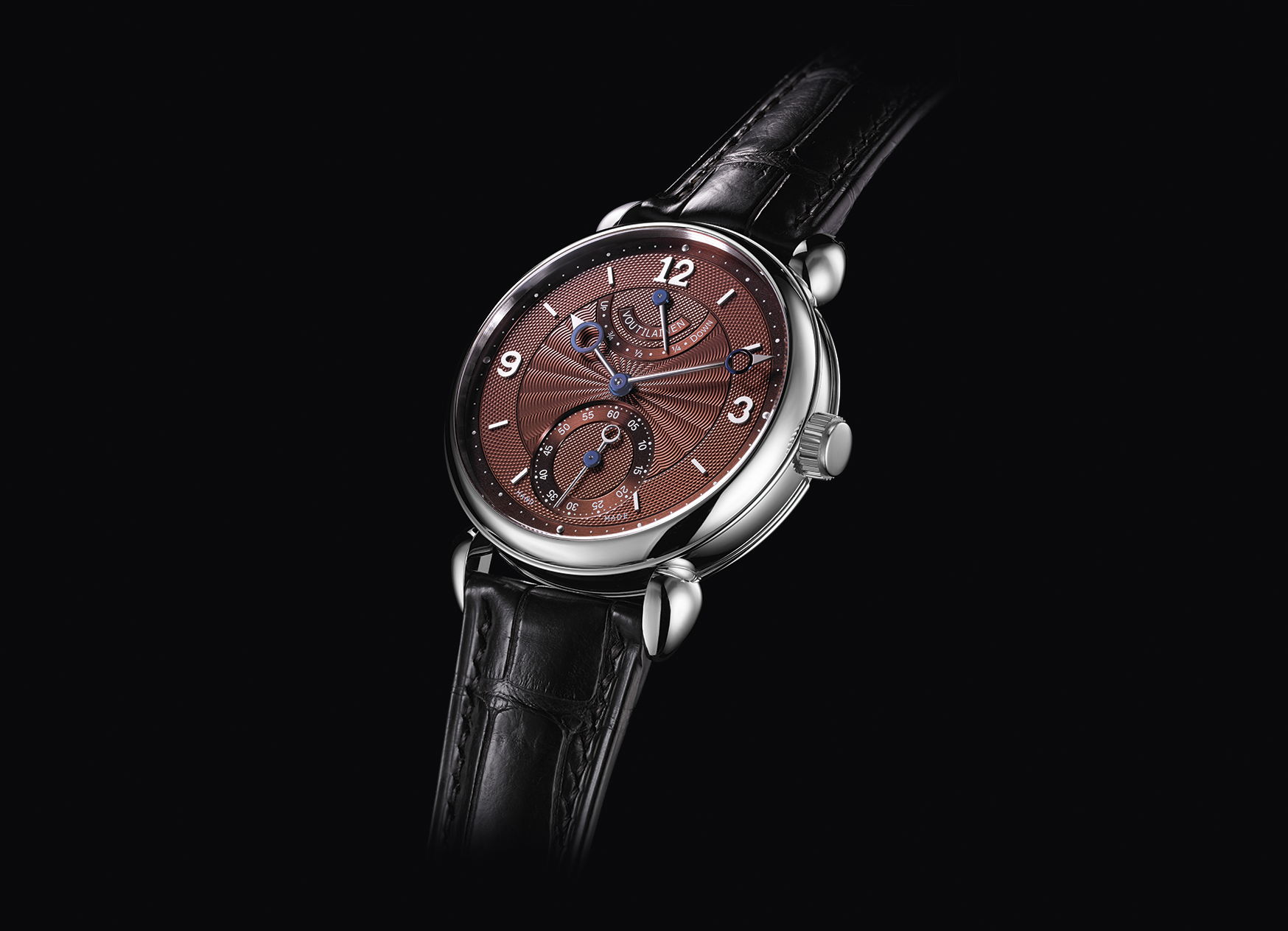
With the independents we work with, we are ordering product a year in advance so a lot of the companies such as Kari Voutilainen, Romain Gauthier or Grönefeld, their waiting times are pretty long to begin with. You place orders with these guys and, if you are lucky, you get watches in six to nine months so we are constantly ordering in advance.
WP: How does that work? Do you pre-sell the watches that you have on order from the watchmakers and promise them to customers at a certain point?
Leon Adams: Promising a certain date is an issue. Due to covid, deliveries have been delayed. But in general when I order in advance from these companies, they give me a good sense of when things will be delivered.
For example, Ferdinand Berthoud came out with their new remontoire and we had ordered two pieces: one for stock and I figured that by the time I received the second one, I would have sold the first. It turned out that the two pieces on order were pre-sold before they came in so we then stepped up and ordered two more. The watchmakers give us a schedule for when we can expect each piece to be delivered so we can pre-sell them.
WP: I have spoken to other retailers like Roberto Manfredi Chiappelloni in Greenwich, CT, and he says he has orders for every F. P. Journe he is due to receive this year and most of next year’s allocation as well.
Leon Adams: There has been a lot of movement in the watch industry in the past couple of years for independent brands. A lot of the collectors and watch aficionados out there have already acquired their Vacheron or their AP or their Patek and they are looking for something different, a little more special and unique than the mainstream brands.
I see a tremendous outpouring of interest for the independents in the past two years and I can only see that continue to increase.
WP: I wonder whether the pandemic has actually been quite good for them. Most independents have very few retail partners, so they are not so exposed to all the store closures, and they have been able to talk with their comparatively small number of customers on an almost one-to-one basis this year because everybody is accustomed to communicating digitally.
Leon Adams: Part of it is due to the fact that they are making such small quantities. When you are dealing with somebody like Voutilainen or Grönefeld, they are producing well under 100 pieces globally per year. There is a tremendous amount of people who have acquired their grail watches and now they want something different and exclusive. That is what has been appealing to a lot of collectors.
WP: Are you talking about people that have collections running into millions of dollars?
Leon Adams: Not necessarily. Most of these brands we are talking about are not for first time buyers. Undoubtedly a first time buyer is going to go for a Rolex or a Grand Seiko when they are starting out before moving up to an IWC or a Panerai and eventually reaching a Vacheron or Patek Philippe. After they have acquired several of these timepieces, they might be sophisticated enough that they start reading about a Philippe Dufour or a Voutilainen. That becomes their new grail watch.
WP: Do you think there are more collectors today that have reached that stage of their collecting journey, or is it the same mega collectors amassing more pieces?
Leon Adams: It is both. There is a tremendous amount of liquidity out there and, let’s face it, most men do not spend money on themselves. When they buy something, it might be a golf club membership and two or three cars, but after that men do not spend money on themselves. A lot of men gravitate to mechanical timepieces and they want something rare.
They see what is happening on the market. They have seen the prices that some pieces have fetched at auction, be that vintage Rolexes or old Pateks and they feel that, beside a watch being something they can use, it might be an investment down the line. This has attracted a tremendous number of collectors in the past couple of years.
WP: If nothing else, a watch that holds its value rather than dropping by 25% when you walk out of a showroom is going to be attractive. We are seeing very strong prices at auction with some independents like Philippe Dufour and F. P. Journe, which has to feed demand for those brands and any others that people think might blow up in the near future. I know jewelers do not like talking about watches as investments, but it is inevitable that customers want to know they will hold or increase in value. Are there any brands that you think are on the up-slope from an investment point of view?
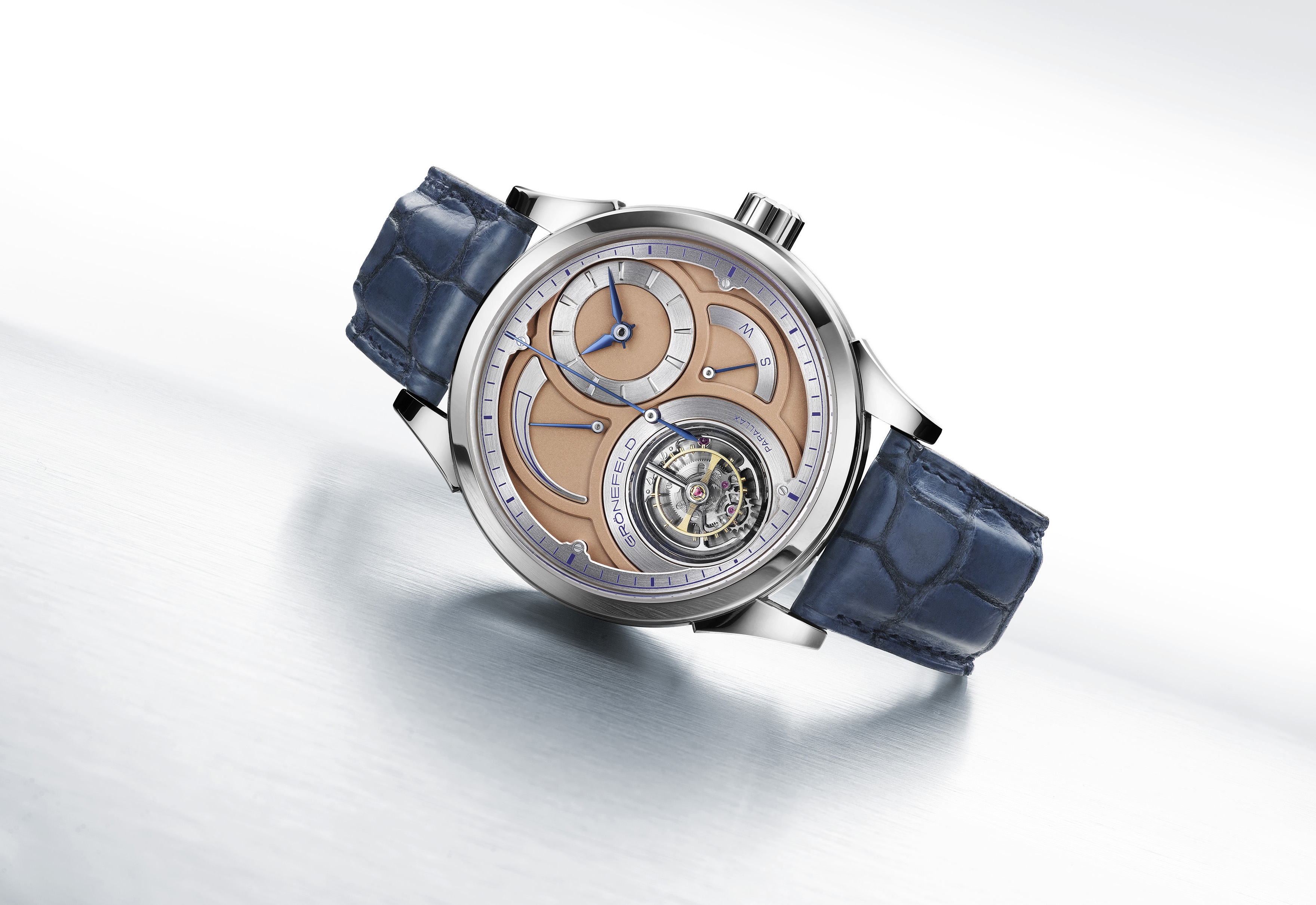
Leon Adams: I never sell a watch based on an investment. However, when I see what the secondary market price is doing for a recently produced Grönefeld, they are going for over retail today. I think what has happened with Rolex, Patek Philippe and F. P. Journe is now transcending down to less known brands like Grönefeld.
There is a site called Collected Man, which I believe is run out of the UK, and he is selling used Kari [Voutilainen ] Vingt-8s for over retail. And they are selling. That is transcending to a lot of independents; some more than others.
Even if they are not enjoying that yet, I believe it is coming to companies like De Bethune, which I think makes a wonderful product. It is starting to happen for some of the MB&F product out there. It is a trend that is giving a lot of life and success to these independents.
WP: Is there anything that the brands you just mentioned have in common when you think about why they are starting to enjoy this sort of success on the back of rising demand? Is it the sophistication of their watchmaking, the designs, their marketing? What is the secret that separates the most successful independents from the rest?
Leon Adams: In years past, the reason that a lot of these independents have not achieved any notoriety is their lack of finance for advertising and promotion. Over the years, unless you were deep into the watch world, you would not have heard of Philippe Dufour or the others.
One of the big changes that helps them today is that social media lets these guys get out there with little or no expense to launch products. That lets them reach and speak with many more people than ever before. The more people that know about something, the more people there will be wanting to buy it. When you are only making a few hundred pieces or less per year, demand is going to exceed supply for these super-mechanical timepieces.
WP: It isn’t just the product that gets tremendous traction on social media, it is also the WhatsApp groups and forums where people share their stores of getting over-retail prices for watches. I don’t think there is a more powerful force than people fearing they are missing out on a winning investment opportunity. That sort of news can send brands into orbit overnight.
Leon Adams: That is for sure. That is something that some of the brands are very smart about, and explains why, for example, Patek Philippe discontinued its hottest product, the Nautilus 5711. H. Moser did the same with its bestselling watch, which was a blue dial entry price point piece. All of a sudden, everybody wants that blue dial, even though Moser is still making green and red.
Smart companies are discontinuing watches at the point they are most in demand. That keeps the public wanting more. Some brands make the mistake of running product lines for too long so they never become super desirable or over-retail because they are constantly being made.
WP: I wonder whether this purple patch the independents are enjoying might be partly because the watchmakers themselves are still alive and customers can speak to them.
Leon Adams: That is one of the biggest selling points. When we are sitting with a client, we tell them they are buying a piece from a brand where the name on the dial is a person who is still alive and actually made that watch. We do not know what is going to happen when they are deceased, but it is like buying art: when you buy a painting from somebody who is alive, but when they pass on, the value of the art shoots up.
The other factor that has really contributed to their success is their small production. If Grönefeld was making 1,000 watches per year, I do not think you would be seeing those watches sought after in the way they are today. If Dufour was making 200 watches per year, I do not think prices would be what they are when he is only making 12 watches per year.
WP: François Journe is making 1,000 watches per year and prices have been rocketing.
Leon Adams: Journe did a very smart thing. When you are making 800 or 1,000 watches per year and you have your own boutiques you can control the market because you can sell most of the product. That gives him a significant advantage over a lot of companies. When I was a Journe dealer, I got as many watches as I needed. Now it is like pulling teeth.
WP: How have independents dealt with the lack of trade shows? I used to think that they needed to exhibit alongside the biggest brands because they would ensure retailers attended and the independents could coattail on their pulling power.
Leon Adams: I am not sure they need trade shows. They have had their areas in SIHH and Baselworld, but when you are only making the sort of quantities they are making and you have the whole wide world to sell it in, you do not need many dealers or distributors to get through your entire annual production. They do not need to acquire new accounts unless they can greatly expand their production, which I do not know if they want to do or not.
WP: There are few examples of watchmakers suddenly shifting gears from making under 100 watches to producing 1,000. Most seem content to keep things tight and increase prices instead.
Leon Adams: Kari Voutilainen has just moved to a new facility up in the mountains, and I believe he will be increasing, but he needs to increase because production has been so low and the waiting times are so long.
It is a year to 18 months to get a piece out of him. That can be frustrating for retailers and customers. If he could get his lead times down to six or eight months, that would be a great step forward.
WP: Finally, how do you feel about the coming year or two for Cellini, assuming the pandemic recedes?
Leon Adams: I think business will continue on this path. I see a tremendous interest in brands today. Going back a few years, I will say that we carried a tremendous amount of brands but the sales were generated in the top 10% of the brands. Today what I am seeing is that all brands are doing exceptionally well. I am talking about mainstream group brands as well as the independents.
In years past we would have done more business with the group brands, but I see that spreading out now so that demand is equal across group brands and independent watchmakers and it is true across expensive and less expensive watches.
That is good news for a brand like Zenith with its new Chronomaster. Interest in that watch has been phenomenal. H. Moser we have carried since day one when they had one watch, which was their Endeavour Perpetual. Today we cannot keep Mosers in stock. We have to order them six months in advance so that we always have some kind of inventory.
I see a tremendous increase in demand for a lot of these independents.
The watch business will remain healthy, I just hope that the jewelry business starts to improve when we get more normality here.
WP: When the Waldorf reopens, will you go back in there with a store?
Leon Adams: I don’t think so. At this point I have been out of there since 2017 so no, we are set here on 56th and Park and I think there is another two years of renovation over there.
WP: When you think about your showroom, particularly in this past year when you are selling so much more without even seeing your customers, do you think that will continue and make the value of paying top rents for fantastic stores in the best locations less attractive to companies like Cellini?
Leon Adams: There is something to be said for that, but people still want the personal attention and advice they can get in our store. The want to try things on and compare items. If you do not have physical locations where people can do that, long term it will be detrimental.
If people think the watch industry can do all of its sales over the internet, why are so many boutiques being opened? The customer wants that in-store experience and that is what we bring to them.
I agree with you about rents, that is why we picked a location that is not on 5th Avenue or Madison Avenue where the rents are five or ten times higher than on Park Avenue. We are more of a destination, which is why we chose this formula.
WP: Jean-Claude Biver once told me you cannot create irrational desire online, and without irrational desire the luxury watch business will die.
Leon Adams: He is one of the smartest people in the entire watch industry as far as I am concerned.

